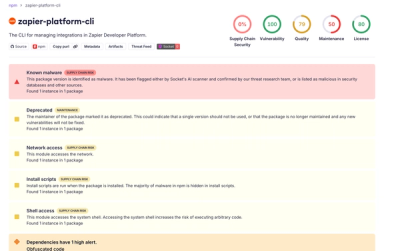CsvToYaml
CsvToYaml is a Ruby gem designed to simplify the process of converting CSV (Comma Separated Values) files into YAML (YAML Ain't Markup Language) format, particularly for use in Rails applications where YAML files are needed for seeding data into the database. This gem was born out of a real-world need when seed data was provided in CSV format, but the project required YAML for rails db:seed.
Features
- CSV to YAML Conversion for Rails Seeds: Easily convert CSV files into YAML format, making it straightforward to create seed data for Rails applications.
- Automatic Data Type Inference: The gem intelligently infers and converts data types, including boolean values, ensuring your YAML files are accurate and ready to use directly without further adjustments.
- Flexible File Handling: Input CSV files can be read from any directory, and output YAML files can be saved to any directory, providing flexibility in your project setup.
- Error Handling: Robust handling of empty files, invalid CSV formats, and other potential issues, providing clear error messages to assist in troubleshooting.
- Simple API: Designed with ease of use in mind, the API allows you to convert files with minimal setup.
Installation
Install the gem and add to the application's Gemfile by executing:
$ bundle add csv_to_yaml
If bundler is not being used to manage dependencies, install the gem by executing:
$ gem install csv_to_yaml
Usage
Here's a basic example of how to use CsvToYaml:
require 'csv_to_yaml'
CsvToYaml.convert('path/to/input.csv', 'path/to/output.yaml')
This will read the input.csv file from any specified directory, convert its contents to YAML format, and save the result to the specified directory as output.yaml.
Example: Converting CSV to YAML and Seeding Data in Rails
Here's a step-by-step example of how to convert a CSV file to YAML and then use it to seed data into a Rails application.
Step 1: CSV File
Suppose you have a CSV file named data/users.csv with the following content:
id,name,age,verified
1,Alice,30,true
2,Bob,25,false
3,Charlie,35,true
4,David,40,false
5,Eve,20,true
Step 2: Convert CSV to YAML
Using CsvToYaml, you can convert this CSV file into a YAML file and save it to any directory of your choice:
require 'csv_to_yaml'
CsvToYaml.convert('data/users.csv', 'db/seeds/users.yaml')
This will generate an users.yaml file at the specified location (db/seeds/users.yaml) with the following content:
- id: 1
name: Alice
age: 30
verified: true
- id: 2
name: Bob
age: 25
verified: false
- id: 3
name: Charlie
age: 35
verified: true
- id: 4
name: David
age: 40
verified: false
- id: 5
name: Eve
age: 20
verified: true
In this YAML file, the data types (including integers and booleans) are correctly inferred and preserved, so you can use it directly in your Rails application without worrying about type mismatches, which can occur if the values were incorrectly treated as strings.
Step 3: Use YAML File to Seed Data
You can now use this YAML file to seed data into your Rails application. First, load the YAML file in your db/seeds.rb:
require 'yaml'
seed_data = YAML.load_file(Rails.root.join('db', 'seeds', 'users.yaml'))
seed_data.each do |record|
User.create!(record)
end
Finally, run the Rails seed command to populate your database:
$ rails db:seed
Now, your database will be populated with the data from the original CSV file, converted to YAML with the correct data types.
Error Handling
CsvToYaml provides specific error classes to handle different scenarios, ensuring that you can troubleshoot issues effectively:
begin
CsvToYaml.convert('data/users.csv', 'db/seeds/users.yaml')
rescue CsvToYaml::EmptyFileError
puts "The input file is empty"
rescue CsvToYaml::InvalidCsvFormatError
puts "The input file is not a valid CSV"
rescue CsvToYaml::ConversionError => e
puts "Conversion failed: #{e.message}"
end
Development
After checking out the repo, run bin/setup to install dependencies. Then, run rake spec to run the tests. You can also run bin/console for an interactive prompt that will allow you to experiment.
To install this gem onto your local machine, run bundle exec rake install. To release a new version, update the version number in version.rb, and then run bundle exec rake release, which will create a git tag for the version, push git commits and the created tag, and push the .gem file to rubygems.org.
Contributing
Bug reports and pull requests are welcome on GitHub at https://github.com/kazuyainoue0124/csv_to_yaml.
License
The gem is available as open source under the terms of the MIT License.



